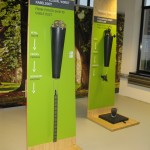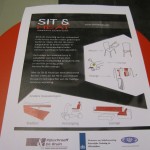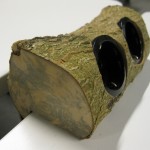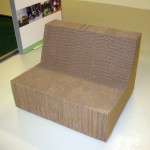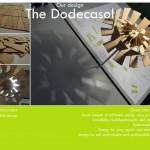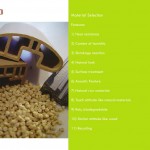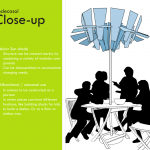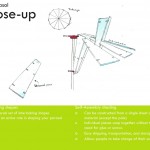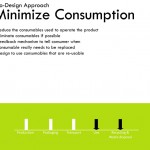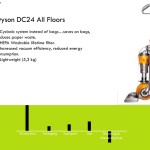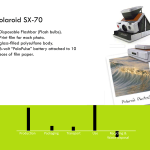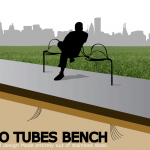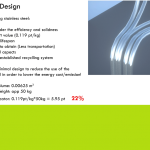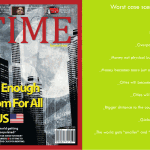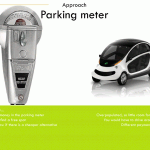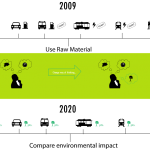Assignment DA409 Design for the Environment
 Link to OWinfo:
Link to OWinfo:
DG409 – Design for the Environment
Feedback form:
Deliverable:
Presentation and reporting on workshop results
Competencies developed:
(1), 4, (B)
Reflection:
One of my goals was to grow in the competency area four and spectacular to sustainable design. A year ago, I attended also for the assignment design for the environment by Prof.Dr.Ir. A.C. Brombacher where I learned where to focus on while designing for dis-assembly. After reading literature like “materials and the environment” and ‘sustainable everyday’ (see extracurricular) I became very interested sustainable design. In my opinion sustainability is one of the aspects of designing which is underrated nowadays. Especially for upcoming designers it is very important to include sustainability in the design-cycle. By attending to this assignment, my goal was to increase sustainability skills and how to apply them in the design-cycle.
During this assignment, we got lectures concerning aspects of sustainability. Afterwards we had to bring this theoretical information into practice by improving/(re-)designing and presenting our team-based solution. Every week we discussed another aspect of sustainability. In the end, we visited an exhibition of the Centre for Sustainable Excellence (ICSE) where I got inspired by the sustainable solutions. At last, we had to pick one sustainable solution and compare them with an ordinary version using an assessment-matrix.
Pictures from ICSE Visit
I learned that sustainability is focusing on three main aspects: People (more convenient, better quality/function, increase quality of life, secure employment), Profit (better value for money), Planet (eco-efficient). Eco-design is part of sustainability and focuses on integrating environmental aspects into product development and design. I became aware there are several motivations and strategies concerning sustainability and eco-design. A few examples strategies are material choice, multi functional design, dematerialization, longevity, design for recycling, design for dis-assembly, social design, change consumer behavior. However, you cannot design the ultimate sustainable design. I learned it is better to do small improvements.
Pictures of Dodecasol we designed, focusing in less environmental impact by suited materials and multi-functional use
I learned good design relays on optimal use of materials. There is no good or bad material; it depends of the functionality. The key is to look at the properties of the design and find suitable materials. There is no ultimate sustainable design; it always relative to something else. As a designer, I have to focus on the whole picture. In addition, I learned that I have to look at the whole life cycle of the product. This life cycle concerns transport and the in- and output of materials, energy and toxicity. By focusing on these aspects, I can get insight of the environmental pollution of a product and where to focus on to reduce the environmental impact. By focusing on the most impactful consumption areas (energy – housing, mobility – tourism and food) I can get the most improvements. For instance, a coffee-machine uses more energy to use than to build. As a designer I should focusing on that problem to decrease the environmental impact.
Focusing on maximum energy impact
I learned a few tools to analyze the sustainability of a product or solution. An eco-checklist, like the one of Tukker, A. & Tischner, U (Eds.) (2006), is a very fast way to asses to sustainability of a product or solution. Calculating the environmental impact is more precise. I learned how to use different material database software (like CES Edupack 2009 and Idemat) to get more insight of the environmental impact of the materials. While selecting the right material I also have to take in consideration: Consumption of resources, Consumption of energy, Hazardous substances/ emissions, Origin and transportation, Aspects of lifespan, Waste generation, Bio-diversity and protection of natural areas and Social aspects. I learned the eco-indicator ’99 (Pt) is a good relative quantity to assess the overall environmental impact of a material.
Minimalistic street bench using less material and Pt-value calculation
Another I learned is to focus on the Product Service System (PSS) in order to reduce the environmental impact. The most people are choosing a product for its additional service rather than the use of the product itself. Furthermore, by designing for the future and forgetting the contemporary limitations and “back casting” towards the present I can get inspiration how to improve the sustainability of a design.
“Back casting method”
Summarized I learned there are four main principles of Ecodesign and Sustainable Design:
1. Early Integration: Start as early as possible
2. Life Cycle Thinking: Cover the whole life cycle of the product
3. Functionality Thinking: Think in functions and services – not in products first
4. Multi Criteria Approach and set the right priorities
By using the right tools, guidelines and mythologies I can improve the environmental impact of a design. This assignment was very helpful to my and brought foundations for my vision. I became very interested in this sustainable design sector.
